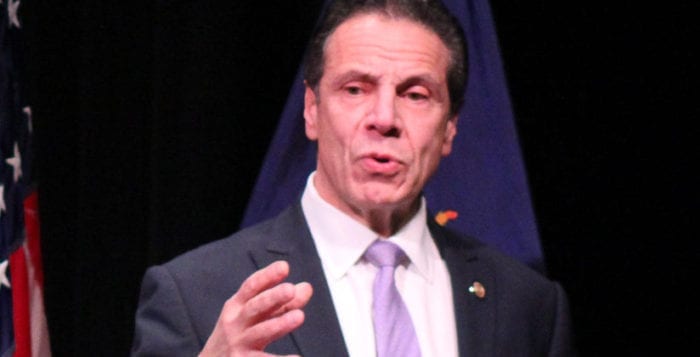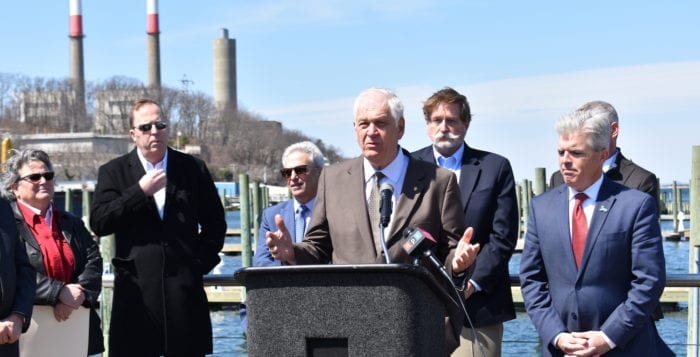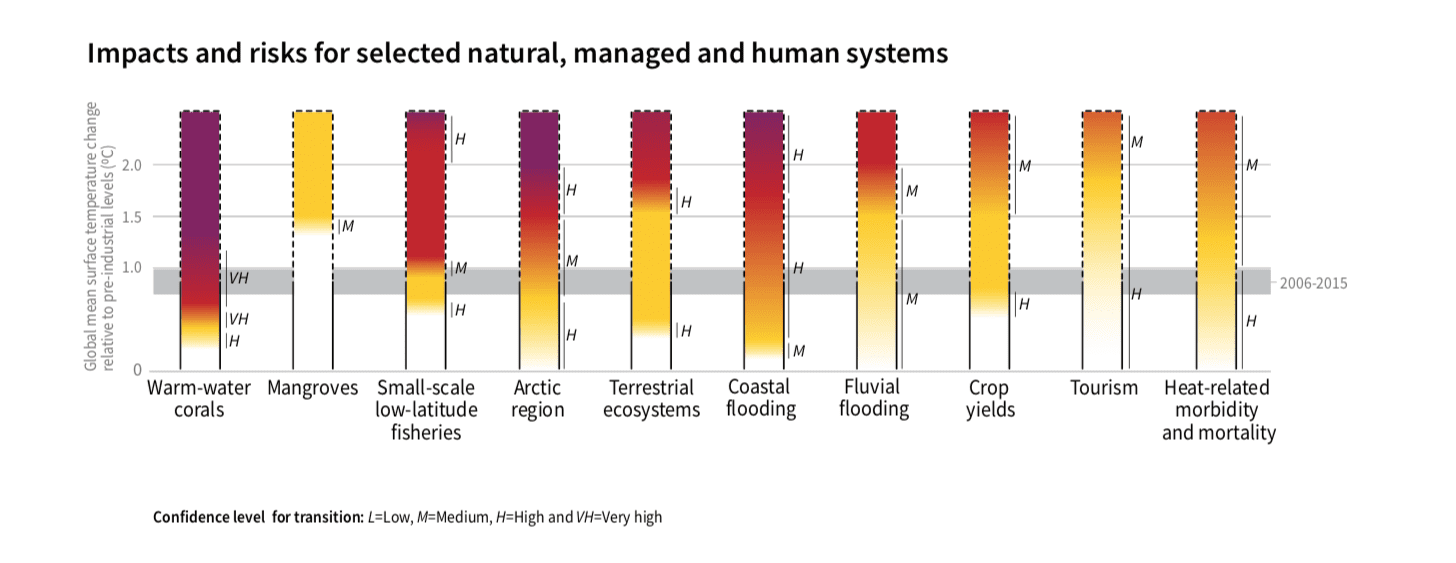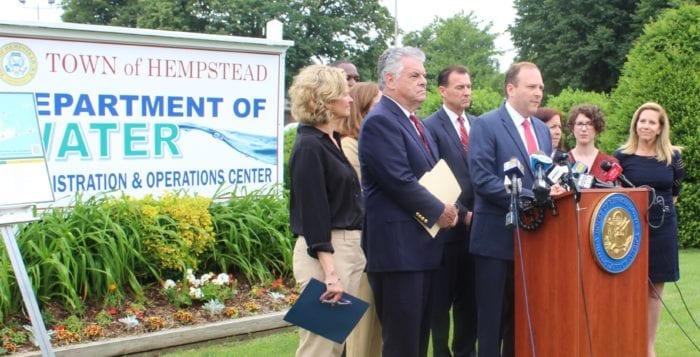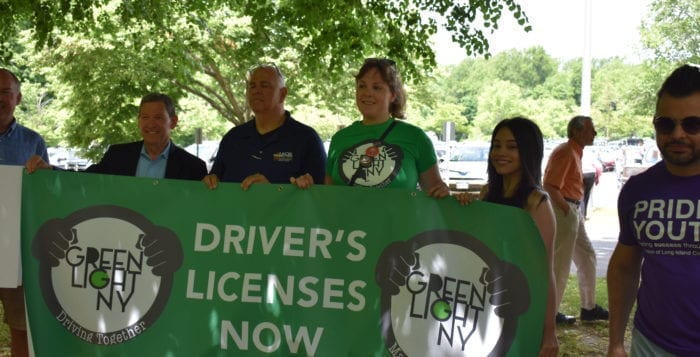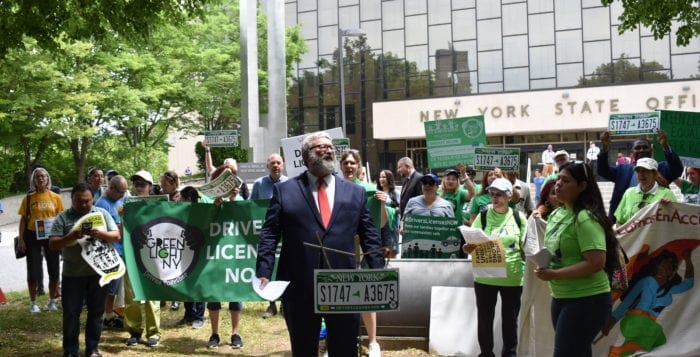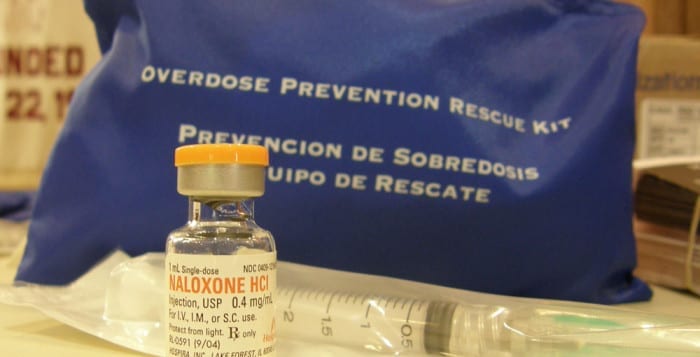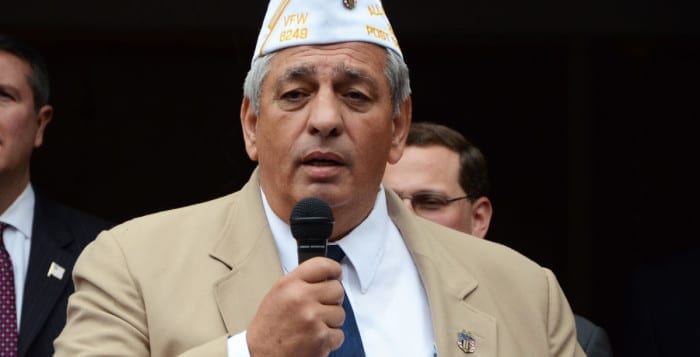Mass shootings and gun violence have rocked the nation, leaving people to ask the question: What can be done to stop the violence?
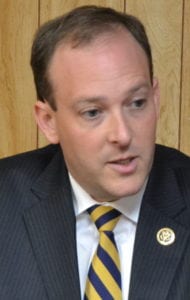
New York State Gov. Andrew Cuomo (D) called on Democratic presidential candidates to support strong gun safety laws. U.S. Sen. Chuck Schumer (D-NY) and U.S. Rep. Peter King (R-NY2), in a show of bipartisanship, called for a vote on the Bipartisan Background Checks Act of 2019 at a press conference Aug. 6.
Improved background checks, banning high-powered automatic and semi-automatic weapons and ammunition, and better mental health screenings have been among the top ideas suggested, some of the legislation relating to which is still pending. Some are stalled at various levels of Congress.
Here’s a recap of what measures have been recently implemented or proposed.
Bump stocks
In March 2019 President Donald Trump (R) signed into law a ban on bump stocks, devices which turn weapons into automatic guns that fire rapidly through the recoil of the gun itself.
Red flag laws
New York State passed a “red flag” law in February 2019, which takes effect on Aug. 24. A new report, entitled “Mass Violence in America: Causes, Impacts and Solutions,” which was released Aug. 6 by the National Council for Behavioral Health, suggests that red flag laws may be among the best tools so far suggested for reducing gun violence. Red flag laws enable people, concerned about the well-being of individuals who display violent tendencies or show signs that they may be at risk to engage in gun violence, to contact law enforcement to institute gun control measures through a court process. Under New York’s statute, three categories of people can submit a red flag on someone: law enforcement, school officials and family.
Background checks
H.R.8 Bipartisan Background Checks Act of 2019
H.R.1112 Enhanced Background Checks Act of 2019
Both bills have passed the House and are stalled in the Senate, with Republican Senate Majority Leader Mitch McConnell refusing to bring H.R.8 in particular to the floor for vote.
H.R.8 establishes background checks for guns transferred between private parties (unlicensed individuals.) Specifically, it prohibits transfer of firearms unless a gun dealer or importer first takes possession of the weapon and does a background check. The prohibition does not apply to gifts that transfer weapons between spouses.

H.R.1112 revises the background checks to applicable firearm transfers from federal licensed firearms licensee (or a gun dealer) to unlicensed person.
U.S. Rep. Tom Suozzi (D-NY3) is co-sponsor of both bills. Suozzi represents Queens and the North Shore of Long Island to parts of Kings Park and runs an office in Huntington. Rep. Lee Zeldin (R-NY1) voted “no” on both bills.
Zeldin defends his “no” vote record on these bills. When asked why, here is his response:
“In the case of Parkland, for example, Nikolas Cruz passed a background check, but clearly should not have had any access to firearms. The current system is flawed. Unfortunately, instead of addressing these shortcomings, H.R.8 and H.R.1112 zeroed in on law-abiding citizens. We need to improve our nation’s background check system by ensuring state reporting and the compilation of all relevant information. We cannot determine if certain people are unfit to own a firearm if we don’t have the necessary available information.”
H.R.4477 Fix NICS (National Instant Criminal Background Check System) Act of 2017
Passed as part of Consolidated Appropriations Act of 2018.
H.R.4477 amends the Brady Handgun Violence Prevention Act to require each federal agency and department to supply disqualifying records of a person prohibited from possessing a firearm.
Zeldin supported the Fix NICS bill, and had this to say:
“We need to ensure lunatics manifesting violent criminal intentions to murder with firearms have access to none. That’s why I supported the Fix NICS bill, which could have saved 26 lives at the First Baptist Church [of Sutherland Springs] in Texas, and why I called for a congressional hearing and action in the wake of the tragedy in Parkland. I support the Mass Violence Prevention [Reform] Act, which would improve information sharing to prevent and deter violence caused by criminal use of firearms, reduce the flow of firearms onto the black market and provide law enforcement with increased resources to keep our communities safe. I also supported the STOP School Violence Act that helps school personnel and law enforcement identify and prevent violence in schools.”
Concealed carry reciprocity
H.R.38 Concealed Carry Reciprocity Act of 2019
The bill allows individuals to carry concealed weapons to other states that allow concealed weapons. The bill was introduced in January and referred to committee with no recent action.
Suozzi voted “no” on similar legislation proposed in 2017. Zeldin is a co-sponsor of the 2019 legislation.
A representative for Zeldin had this to say on the bill:
“The congressman supports the rights of law- abiding Americans to own firearms to protect themselves, their family and other loved ones. He believes lunatics manifesting violent criminal intentions to murder with firearms have access to none.”


